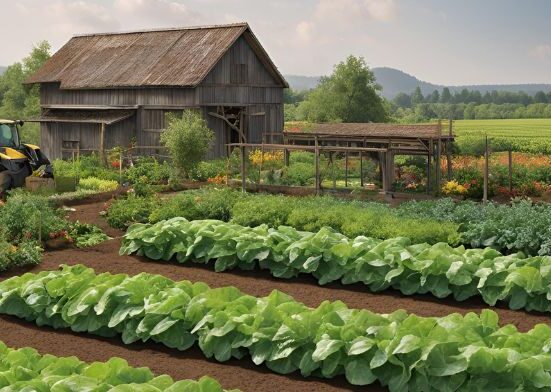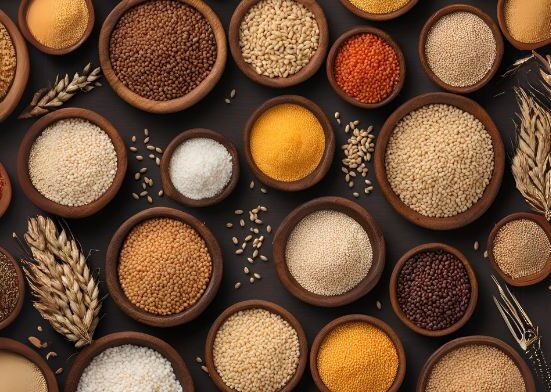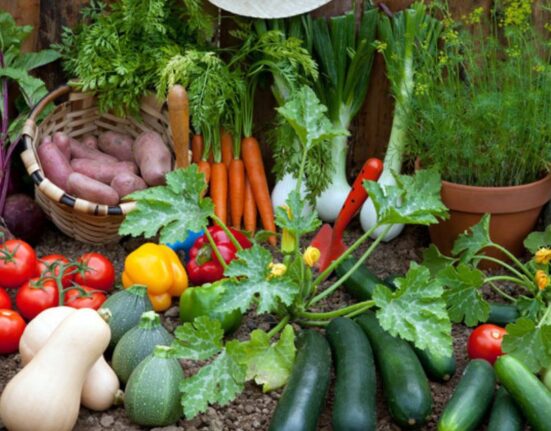Spring is nature’s gentle reminder that it’s time to begin again. As the days grow longer and the air turns warmer, gardeners everywhere feel the itch to return to their soil beds, seed packets in hand. For both beginners and seasoned green thumbs, spring marks the ideal season to start planting a wide variety of vegetables. The calm yet nourishing weather helps young plants take root, thrive, and develop strong stems before the heat of summer sets in.Vegetable gardening in spring isn’t just a hobby—it’s a rewarding lifestyle choice. There’s something incredibly satisfying about watching your seeds sprout into healthy greens, pulling fresh carrots from the earth, or harvesting crisp lettuce straight into your salad bowl. And the best part? Many spring vegetables are quick-growing and low-maintenance. This makes them ideal for gardeners of all abilities.
In this blog, we’ll explore the top vegetables to plant in spring and how to give them the best start. Whether you’re working with backyard beds, balcony pots, or raised containers, spring offers the perfect opportunity to grow your own food, eat healthier, and reconnect with the earth. Let’s dig in and discover which vegetables to grow in spring can make your garden thrive this season!
What Vegetables to Plant in Spring
The best time of year to begin planting is in the spring. A wide variety of vegetables, especially those that thrive in cool temperatures. Some of the best early spring vegetables include leafy greens like spinach, lettuce, and kale, which develop rapidly and are harvestable several times. Radishes and carrots are root vegetables that prefer cool soil and can be sown directly into the ground as soon as the soil is workable. Beets are another great choice, offering both edible roots and nutritious greens.Peas, including snap and snow peas, veg to plant in spring love the cooler temperatures and will flourish with a simple trellis for support. Broccoli, cabbage, and cauliflower also thrive in spring and can be started from seedlings indoors or purchased as transplants. Onions and potatoes are hardy crops that do well when planted early in the season, especially in well-drained soil.
For those with slightly warmer climates, zucchini and green beans can be added to the garden later in spring when the soil warms up. Starting your spring garden with these vegetables ensures a head start on a productive and healthy harvest. With the right timing and care, spring planting can set the tone for a bountiful gardening season ahead.
Why Spring Is the Perfect Time for Planting Vegetables
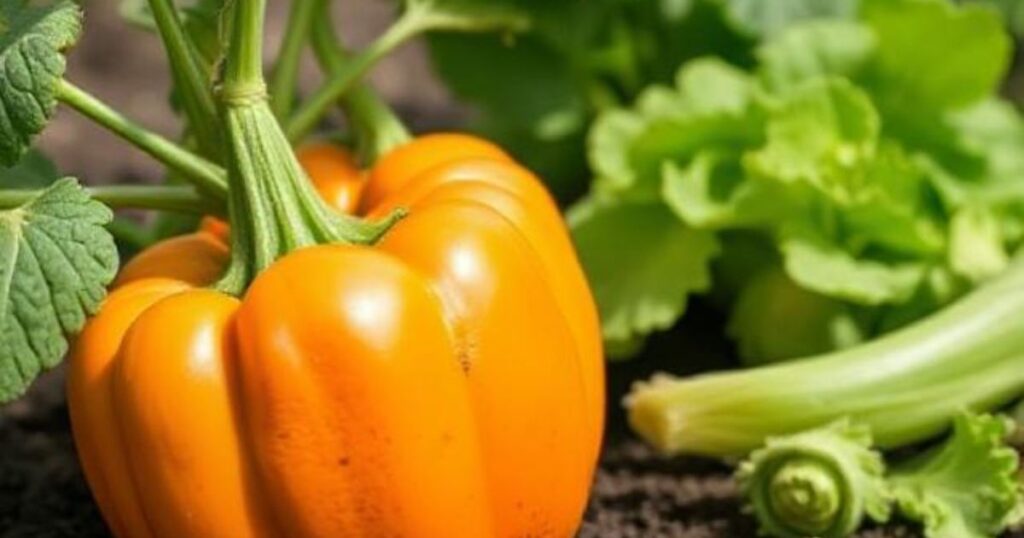
Spring offers the ideal conditions for starting a productive vegetable garden. As winter fades, the soil begins to warm up, which triggers seed germination and encourages healthy root development. The increase in daylight hours provides young plants with the sunlight they need for strong, steady growth. Many vegetables, especially cool-season crops like lettuce, spinach, peas, and carrots, thrive in the mild temperatures and moist conditions typical of early spring.Unlike summer, when heat can stress young seedlings and dry out the soil quickly, spring offers a more forgiving climate. Rainfall is usually more consistent, helping to maintain proper soil moisture levels without constant watering. This makes spring planting easier and more sustainable, especially for beginner gardeners.
Additionally, planting in spring gives crops plenty of time to mature before the intense heat of summer or the first frost of fall. Starting early means a longer growing season, earlier harvests, and in some cases, the ability to produce multiple crops in one year.Overall, spring is nature’s invitation to plant, grow, and nurture. Taking advantage of this season ensures your vegetables have the best possible start, leading to a vibrant, healthy garden and fresh produce right from your backyard.
Lettuce: The Cool-Season Champion
Lettuce is a staple for spring gardens due to its preference for cooler temperatures. This leafy green thrives in temperatures between 60°F and 70°F, making it an excellent choice for veggies to grow in spring early spring planting.
Why Plant Lettuce in Spring?
- Quick Growth: Lettuce varieties like romaine, butterhead, and loose-leaf can be harvested in as little as 30-60 days.
- Versatility: Perfect for salads, sandwiches, or wraps, lettuce adds fresh flavor to any meal.
- Space-Saving: Lettuce can be grown in containers, raised beds, or even as a border plant.
Growing Tips
- Soil: Use well-draining, fertile soil with a pH of 6.0-7.0.
- Planting: Start inside 4-6 weeks or sow seeds immediately in the garden. Weeks before the last frost. Space seeds 6-12 inches apart.
- Maintenance: Make sure the soil is constantly damp but not soggy. Mulch to Mulch to retain moisture and deter weeds.
- Varieties: Try ‘Black Seeded Simpson’ for loose-leaf or ‘Parris Island’ for romaine.
Spinach: Nutrient-Packed and Easy to Grow
Spinach is another cool-season crop that flourishes in spring’s mild weather. Packed with vitamins A, C, and iron, spinach is a nutritional powerhouse that’s simple to grow.
Why Plant Spinach in Spring?
- Cold Tolerance: Spinach can tolerate light frosts, Fastest Growing Vegetables making it ideal for early spring.
- Fast Harvest: Ready to pick in 40-50 days.
- Compact Growth: Ideal for pots or tiny gardens.
Growing Tips
- Soil: Prefers loamy, well-draining soil with a pH of 6.5-7.0.
- Planting: As soon as the soil is workable, plant seeds straight into the garden. About 4-6 weeks before the last frost.
- Care: Water regularly and provide partial shade in warmer climates to prevent bolting (when the plant flowers and becomes bitter).
- Varieties: ‘Bloomsdale’ is a reliable heirloom, while ‘Baby’s Leaf’ is great for tender greens.
Peas: Sweet and Productive
Peas are a spring favorite, offering sweet, crisp pods that are a delight to eat fresh or cooked. They bloom well in chilly climates and are ideal for early.
Why Plant Peas in Spring?
- Cold Hardy: Peas can be planted as soon as the soil temperature reaches 45°F.
- Variety: Choose from snap peas, snow peas, or shelling peas for different culinary uses.
- Vertical Growth: Peas climb trellises, saving space in small gardens.
Growing Tips
- Soil: pH 6.0 to 7.5, well-draining soil.
- Planting: Sow seeds 1-2 inches deep and 2 inches apart in rows. Provide a trellis or support for climbing varieties.
- Care: Keep soil moist and avoid overhead watering to prevent disease. Harvest regularly to encourage pod production.
- Varieties: ‘Sugar Ann’ for snap peas or ‘Green Arrow’ for shelling peas.
Radishes: The Speedy Root Crop
Radishes are one of the fastest-growing vegetables, making them a rewarding choice for impatient gardeners. Their peppery taste gives salads and garnishes a zesty touch.
Why Plant Radishes in Spring?
- Quick Turnaround: Ready to harvest in 20-30 days.
- Beginner-Friendly: Low maintenance and Lilac Flower forgiving of less-than-perfect soil.
- Companion Planting: Radishes deter pests when planted near crops like cucumbers or squash.
Growing Tips
- Soil: pH 6.0 to 7.0, loose, well-draining soil.
- In order to plant, trade roots in rows ½ inch deep and 1 inch apart. Thin seedlings to 2 inches apart for larger roots.
- Care: Water consistently to prevent woody or overly spicy radishes.
- Varieties: ‘Cherry Belle’ for classic red radishes or ‘French Breakfast’ for a milder flavor.
Carrots: Crunchy and Colorful
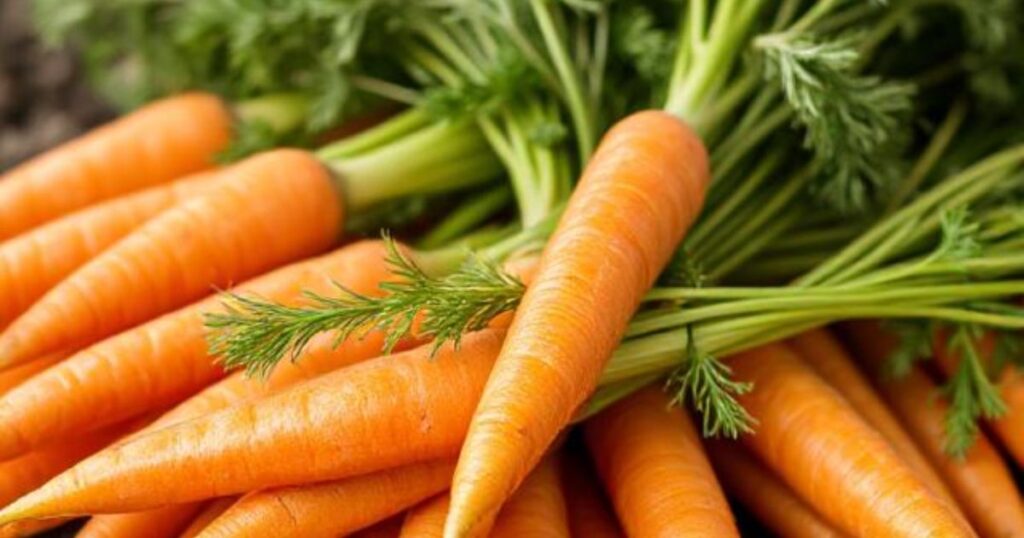
Carrots are a versatile root vegetable that thrives when planted in early spring. With a range of colors and flavors, they’re both nutritious and visually appealing.spring veggies to grow
Why Plant Carrots in Spring?
- Long Season: Carrots develop sweet, crisp roots in cool spring soil.
- Storage: Properly stored, carrots last for months after harvest.
- Variety: Choose from orange, purple, Zinnia Perennial or yellow varieties for a vibrant harvest.
Growing Tips
- Soil: Loose, sandy soil free of rocks, with a pH of 6.0-6.8.
- Planting: Sow seeds ¼ inch deep, 1-2 inches apart. To achieve the best root development, space seedlings 3 inches apart.
- Care: Keep soil moist during germination (which can take 14-21 days). Mulch to prevent green shoulders.
- Varieties: ‘Nantes’ for sweet flavor or ‘Cosmic Purple’ for striking color.
Broccoli: A Cool-Season Superfood
Broccoli is a nutrient-dense vegetable that performs best when planted in spring. Its heads and side shoots provide multiple harvests from a single plant.
Why Plant Broccoli in Spring?
- Cool Weather Preference: Thrives in temperatures between 65°F and 75°F.
- Multiple Harvests: Cut the main head to encourage smaller side shoots.
- Nutrient-Rich: High in fiber, vitamins, and antioxidants.
Growing Tips
- Soil: pH 6.0 to 7.0, well-draining, fertile soil.
- Planting: Six to eight weeks before the final frost, What Plant Attracts Hummingbirds start seeds indoors. When seedlings are 4–6 inches tall, move them outside.
- Care: Provide consistent moisture and mulch to keep roots cool. Watch for pests like cabbage worms.
- Varieties: ‘Calabrese’ for large heads or ‘De Cicco’ for abundant side shoots.
Kale: Hardy and Nutrient-Dense
Kale is a leafy green that’s both cold-tolerant and packed with nutrients, making it a must-have for spring gardens.
Why Plant Kale in Spring?
- Cold Hardy: Can withstand frost and even improve in flavor after a light freeze.
- Versatile: Use in salads, smoothies, or cooked dishes.
- Prolonged Harvest: Cut-and-come-again harvesting extends the season.
Growing Tips
- Soil: soil that drains well and is fertile, with a pH of 6.0 to 7.5.
- Planting: Sow seeds directly or start indoors 4-6 weeks before the last frost. Space plants 12-18 inches apart.
- Care: Water deeply and regularly. Remove yellowing leaves to promote new growth.
- Varieties: ‘Lacinato’ (dinosaur kale) for tender leaves or ‘Red Russian’ for vibrant color.
Beets: Dual-Purpose Delight
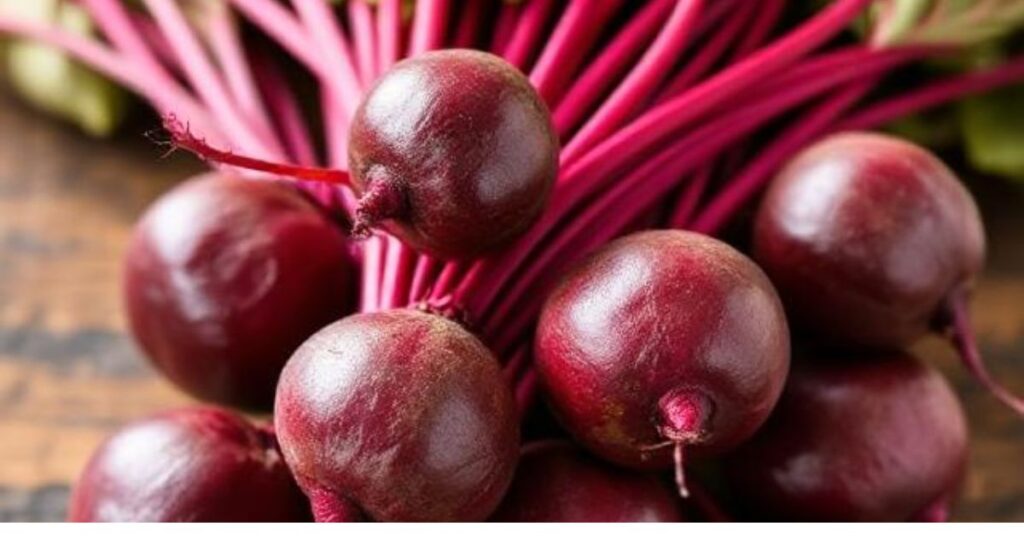
Beets offer a two-for-one harvest: their roots are sweet and earthy, while their greens are edible and nutritious.
Why Plant Beets in Spring?
- Cool-Season Crop: Thrives in temperatures between 50°F and 75°F.
- Quick Growth: Roots are ready in 50-70 days, greens in 30-40 days.
- Colorful Varieties: Red, golden, or striped beets add visual appeal.
Growing Tips
- Soil: pH 6.0 to 7.0, loose, well-draining soil.
- Planting: Sow seeds ½ inch deep, 2-3 inches apart. Thin seedlings to 4 inches apart.
- Care: Keep soil moist and weed-free. Harvest greens sparingly to avoid stunting root growth.
- Varieties: ‘Detroit Dark Red’ for classic beets or ‘Chioggia’ for striped roots.
General Tips for a Thriving Spring Garden
To ensure your spring vegetables flourish, follow these best practices:
- Know Your Zone: Check your USDA Hardiness Zone to determine the last frost date and optimal planting times.
- Prepare the Soil: Test soil pH and amend by adding organic debris or compost to enhance drainage and fertility.
- Water Wisely: Most spring crops prefer consistent moisture. Use drip irrigation or water early in the day to reduce evaporation.
- Pest Management: Use row covers or companion planting to deter pests naturally. Inspect plants regularly for signs of damage.
- To prevent soil-borne illnesses, rotate your crops once a year. Illnesses, diseases, and maintaining nutrient balance.
Conclusion
Spring marks the beginning of the gardening season—a time when the soil starts to warm, the days grow longer, and nature awakens with fresh energy. It’s the ideal season to plant a wide variety of vegetables that thrive in cool, moist conditions. From root crops like carrots to lush greens like spinach, kale, and lettuce to root crops like carrots, radishes, and beets, spring offers endless opportunities for home gardeners to enjoy fresh, What Is The Autumn Harvesting flavorful produce right from their backyard or balcony.Choosing the right vegetables to plant in spring not only ensures a successful harvest but also sets the tone for your entire gardening year. Early-season veggies can be enjoyed with a bit of preparation. Continue planting for summer and fall harvests. Starting your garden in spring helps you take advantage of favorable weather and gives plants a strong head start.
spring garden vegetables in spring also brings other benefits—it’s an excellent way to enjoy nutritious, homegrown food, decompress, and get in touch with nature. Therefore, whether you’re a novice or an experienced gardener, don’t miss the chance to get your hands in the dirt and your garden growing. Embrace the season of renewal and let your spring garden flourish with vibrant, delicious vegetables.
FAQ
Which vegetables are the simplest to cultivate in the spring?
Leafy greens like spinach, lettuce, and kale are among the easiest to grow in spring. They thrive in cool temperatures and grow quickly, making them perfect for beginner gardeners.
When should I start planting spring vegetables?
You can start planting cool-season vegetables as soon as the soil is workable—usually in late February to early April, depending on your region’s climate and the last frost date.
Do I need to start seeds indoors for spring planting?
Some vegetables like tomatoes, peppers, and broccoli benefit from starting indoors six to eight weeks before the last frost. Others like radishes, peas, and lettuce can be sown directly into the soil.
How much sunlight do spring vegetables need?
Most spring vegetables need at least 6 hours of sunlight daily. Partial shade is OK for leafy greens, but fruiting vegetables such as peas and early tomatoes need full sun o thrive.
Can I grow spring vegetables in containers?
Yes! Many spring vegetables like lettuce, radishes, and spinach grow well i containers. Make sure to use well-draining soil and place the containers where they receive adequate sunlight.




